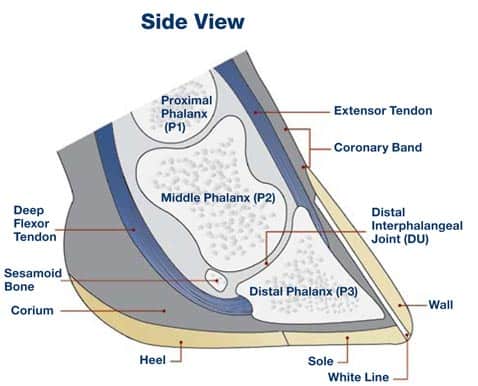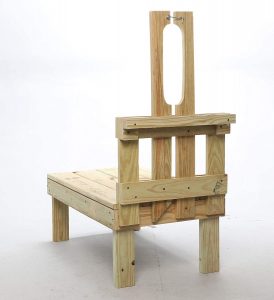In this article, we will help you choose from the numerous pig hoof trimmers on the market. Also, we will give you a jumpstart on how to trim your pig’s hooves. But first, why should you trim your pig’s hooves?
Understanding The Hoof Of Your Pig
Importance Of Trimming Your Pig’s Hoof
Like most cloven-footed animals, pigs tend to have fused hooves. When that happens, your swine could suffer difficulties while walking. We have even seen some cases of animal neglect that the pig suffers from long-term effects when walking. It is very important to help and keep a proper trimming schedule for all critters that need it!
While the case can be less of an issue with lean pigs, their heavy counterparts, on the other hand, will suffer a great deal of pain. Worst: fused hooves could lead to injuries and eventual lameness. To prevent such occurrences, trimming the hoof of your pig is critical to keep it healthy. But how often should you do that? Looking for a guide on the best goat hoof trimmer?
How Often Should You Trim Your Pig’s Hoof?
The answer here depends on two factors. The first one to consider is the age of your pig.
Piglets tend to grow hooves faster than their aged swine counterpart. As with all young animals, growth is fast and rapid. In that case, you might need to trim their cloven feet every 3 months. This is a great schedule to keep and we suggest using some kind of digital reminder such as Google assistant to help you stay on a healthy schedule with your critters. For adult pigs, on the other hand, have reached steady growth with developed hooves. In that case, trimming every 6 months should suffice.
The second factor you want to consider is the flooring of your pig house. What material did you use? If you used a soft bed/soil surface, you might need to trim your pig’s hooves even earlier than 6 months. Why? Naturally, pigs trim and wear down their cloven feet as they walk. However, if the flooring material is soft, there will be less friction, hence, no natural wear.
On the other hand, hard-surface flooring means your swine will naturally trim its feet. In that case, you could wait for 7-9 months before intervening. We suggest that you have an area of a hard surface that is accessible by your critters at all times to help maintain natural wear. Although you will most likely need to figure out a schedule that works in conjunction with your pig’s wear time.
That said, let’s get handsy; let’s go trim some hooves!
Choosing The Best Pig Hoof Trimmers – What You Should Know
Note: there is no one-fit-all hoof trimmer for all pigs. But, you can always narrow the products down to which best fits your swine. How?
Here are the factors to consider:
Design
Go for compact-design trimmers. That way, you will suffer less pain in your joints while trimming the hooves. Another thing to note about design is weight. A lightweight trimmer will be comfortable and even portable to use. Ergonomic trimmers are one way of combating fatigue and long term use. Not everybody has the same size or shape hands so this may take time by purchasing a few different pairs or doing a little bit of research to see what others are saying in the reviews.
Ease Of Use
Sizing in itself makes a product easy to use. To get even more comfort from using your trimmer, look for the easily-controlled models. These types of trimmers will allow you to trim the hooves of your pig – regardless of the irregularities in their hooves without injuring the swine.
Power Options
Manual nippers have their share of discomfort. So, it’s best to find an alternative that you can handle manually and electrically. That way, you will save energy and the most important thing in your life… time. In our best goat hoof trimmer article we talk about a great electronic hoof trimming tool that can also be used with your pig critters. We suggest you take a quick look as this product is absolutely amazing if your budget can handle it.
Now, let’s talk about the trimming process.
Trimming Your Pig’s Hooves In 5 Simple Steps
A quick overview of objectives that will be accomplished here:
- First: We will be removing the overgrowth claw to its natural length and size.
- Second: Balance the weight distribution of the claw to ensure proper and natural walk.
- Last: Remove and correct excessive heel and overgrowth.
Step 1: Gather your chosen trimming tools and protective equipment
We’ve all heard it our entire life. Safety first! Well, this time is not different. It is very important to protect yourself before starting your trimming.
Here is a list of recommended safety equipment.
- Our favorite protective face shield
- Cheap masks that can be reused a few times or more. With Covid-19 I am sure you have an abundance of these around. Maximum safety includes a KN95 mask
- Noise canceling ear muffs when using an electric trimmer. These are our favorite.
- Protective leather gloves or welding gloves. We have found these to be one of the best and least amount of resistance when working on our critters.
Our top list of trimmers. We have used all of these before:
Budget-friendly hoof trimmers for many critters
These trimmers are good but don’t expect great things with these and you will definitely need multiple backups for when they break. If you are on a budget then go with these and they will get the job done most of the time.
Zenport trimmers – just a little bit more money
The Zenport Q91 hoof trimmers are a great choice for budget-friendly shoppers. We have seen these trimmers outlast our cheap counterpart 10 fold. Just a few extra bucks sure goes a long way!
Don’t forget the final touches.
Hand filer to complete the job
I am sure you have those small popsicle stick nail filers in your bathroom drawer. Well, these are similar to what we use on our nails but perfect for your critter! You will get many years out of these as well.
Don’t forget to reward the little guy after he is done with this stressful activity! Treats are here to place everybody!
Step 2: Familiarize yourself with the Pig hoof anatomy
Step 3: Restraining the pig
Proper and adequate restraint needs to be the most important step in the trimming process. You need to ensure your animal is both comfortable and properly restrained before proceeding. Trimming is a very stressful time so we want to make sure we do not cause any harm or even any extra stress to the animal. Having a pig that gets very anxious is completely normal in many critter species including goats, dogs, and other farm animals.
There are a few options to restraining your pig but you will need to have proper experience and knowledge of your animals.
Restraint Table is a quick option but not always the best. The biggest issue we face with these is that the animal is no longer low to the ground and at risk of falling off and getting injured. So always be careful of these types of restraints. However many other critters may be perfect for these types, such as a farm guard dog or baby animals.
A very cost-effective and best solution we have found is to build your own restraint. This can be done using reused wood such as a pallet. Here is a great starting point to build your own. This can be modified to fit most critters by the restraint option that you include. We have used this exact design for many different types of critters. All you would need to do is add a feeding bowl to the front to keep them occupied.
Step 4: Measuring and Trimming
- Use your ruler to mark a trim line 55-60mm down from the coronary band on the foot. This will give you the trim length. For the duclaw hold it next to the hoof and mark a link on the claw straight across from the coronary band. Use your nipper or trimmer to gradually chip the excesses after the marked point on the claw.
- Once it is trimmed you can use the hand filer to finish off the job and remove any sharp edges.
- You can always use your hand to check the balance of the feet. That way, you can get an appropriate trim for the hooves of your pig.
Now that wasn’t so bad, was it? Don’t worry this will be second nature in no time! Also, be sure to check out our complete pig farming starter guide.














Leave a Reply